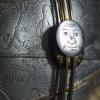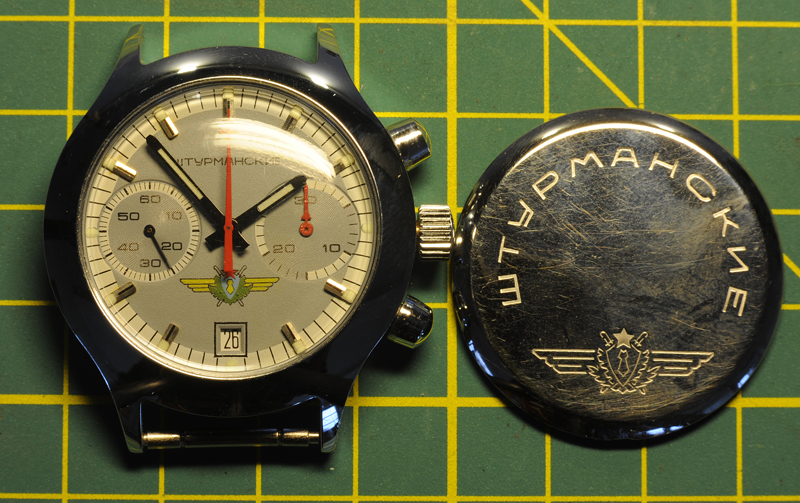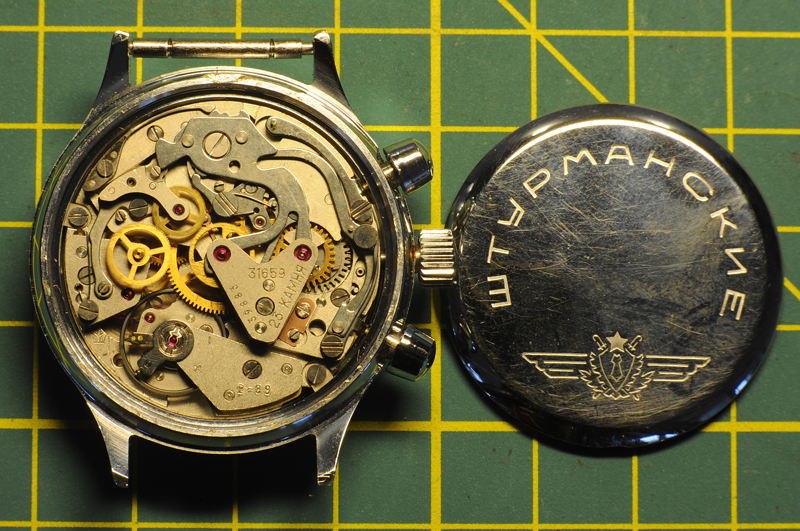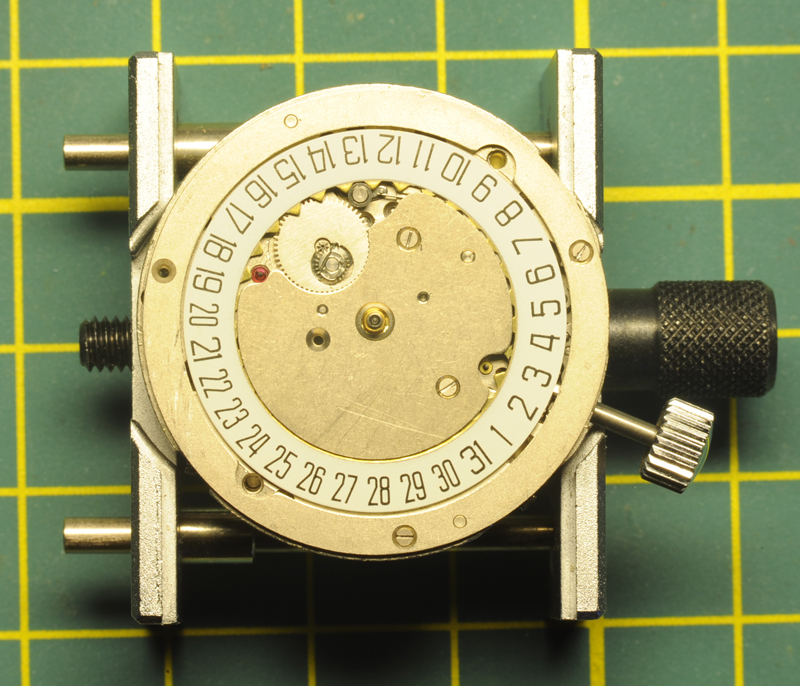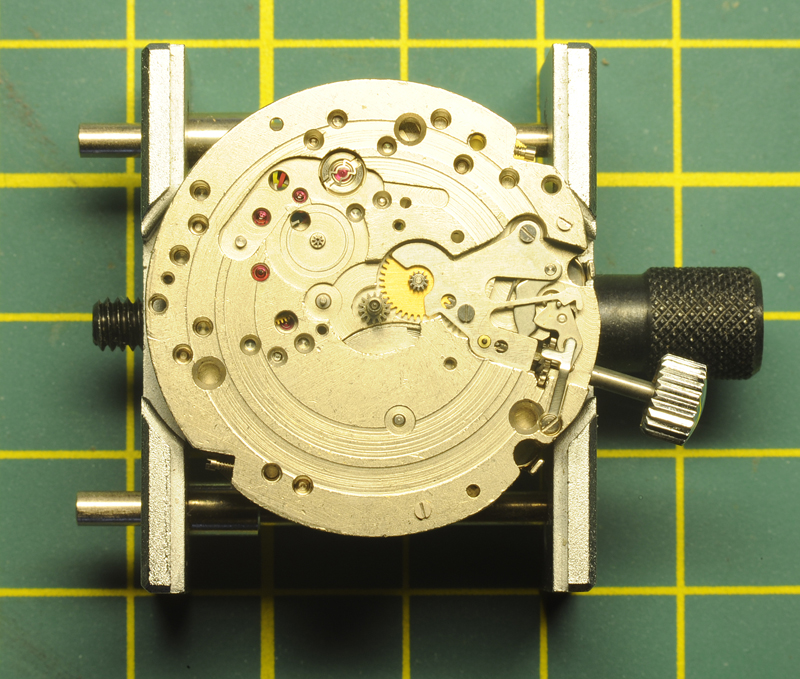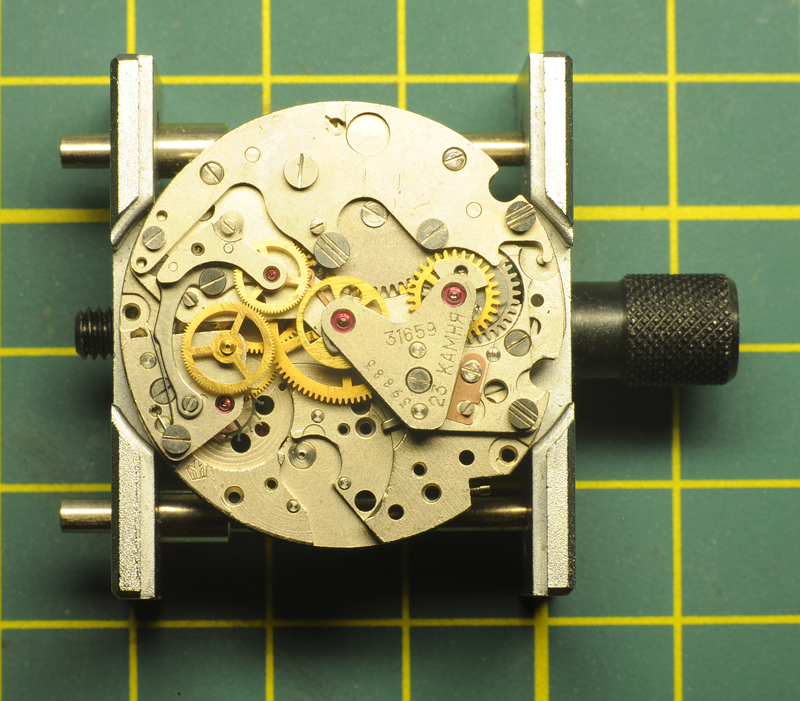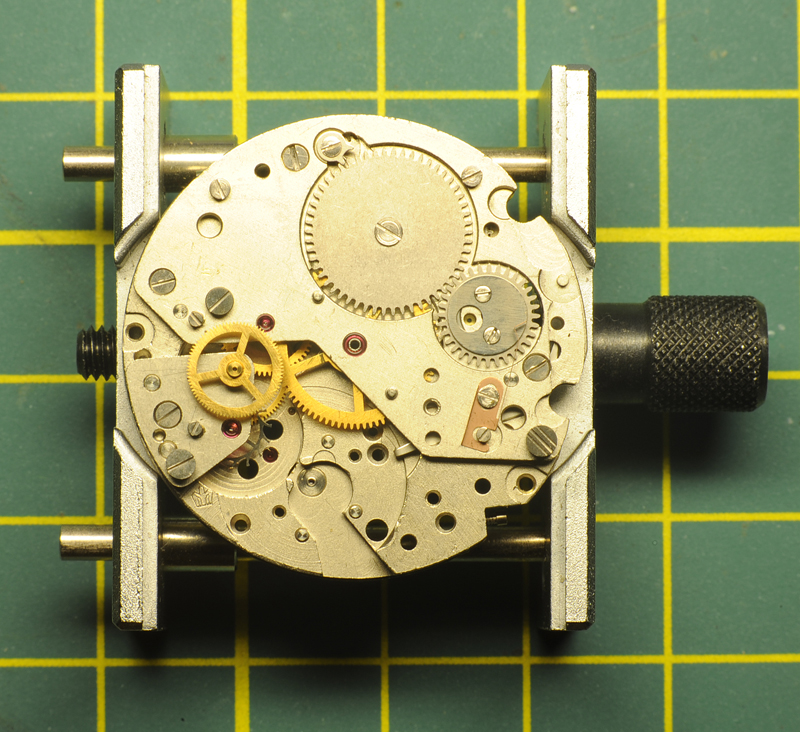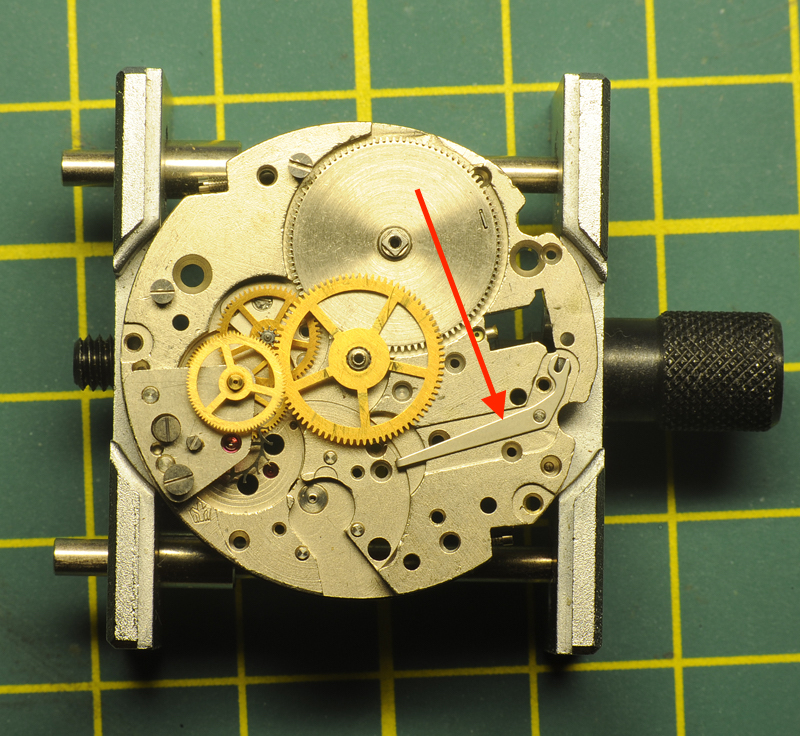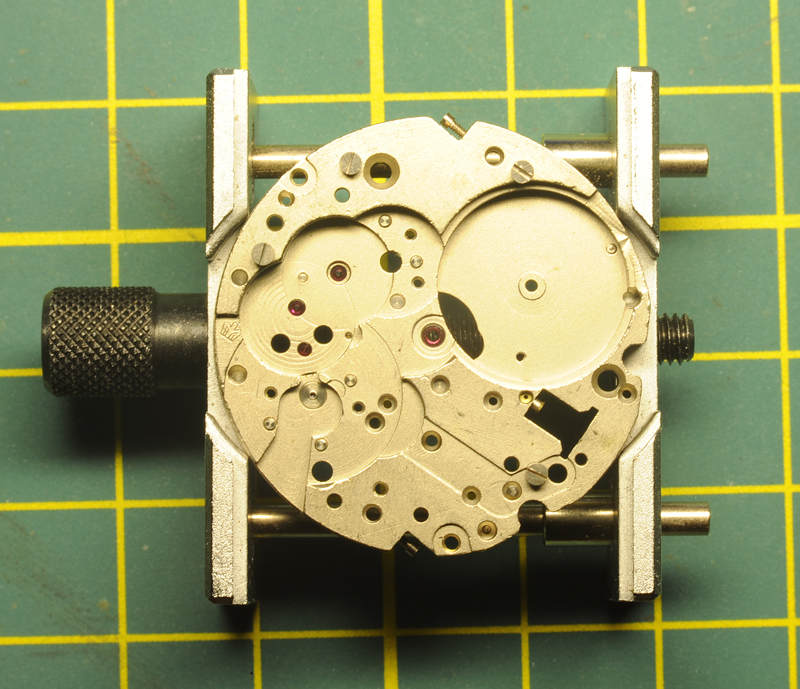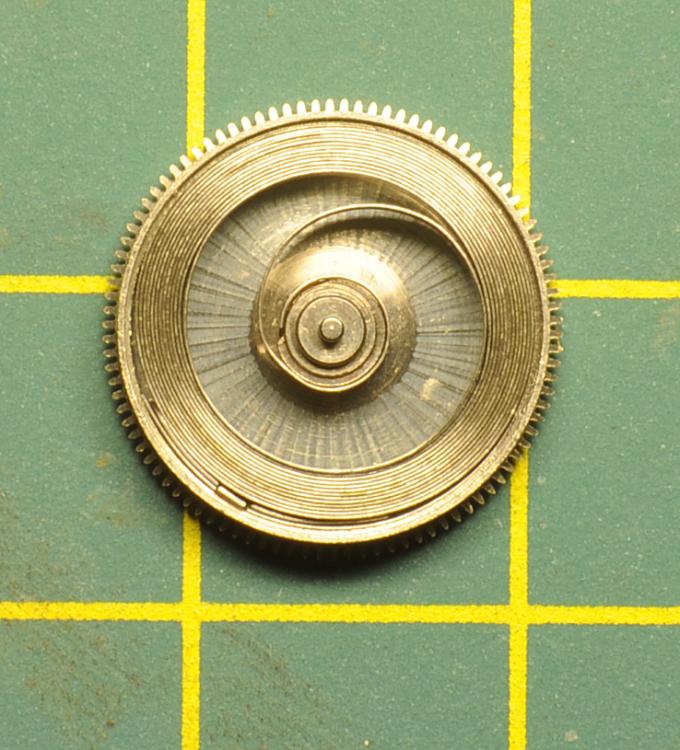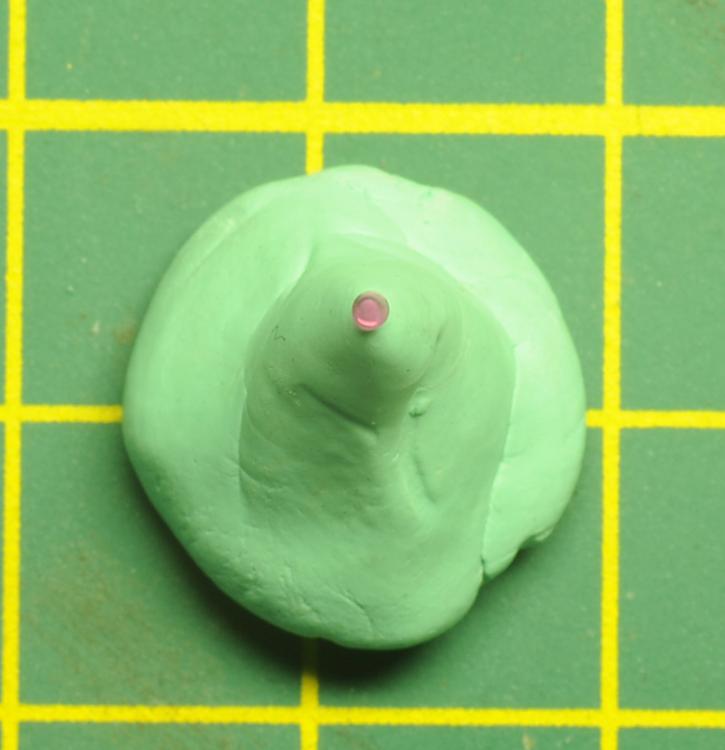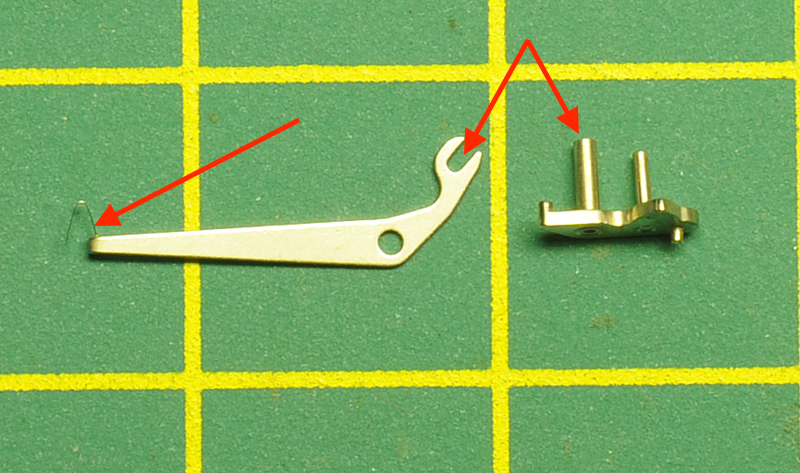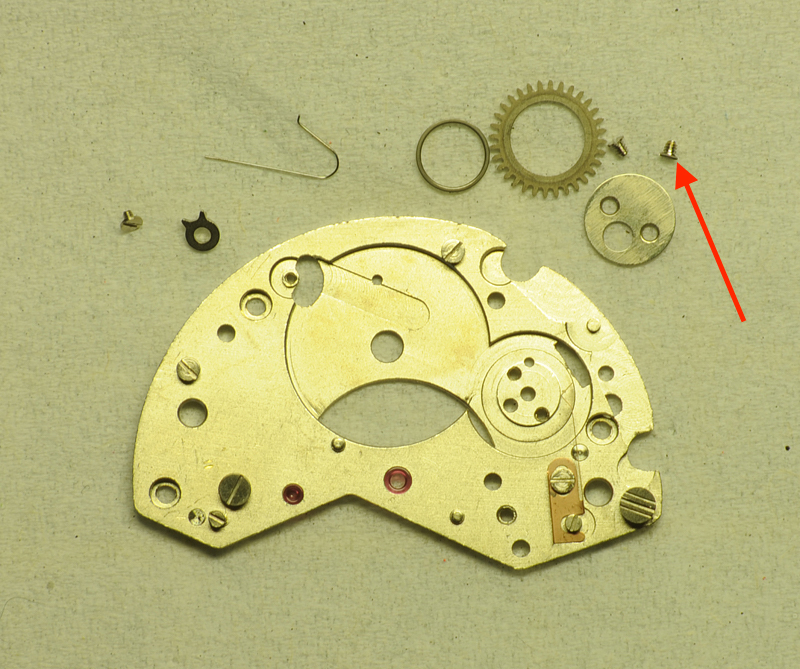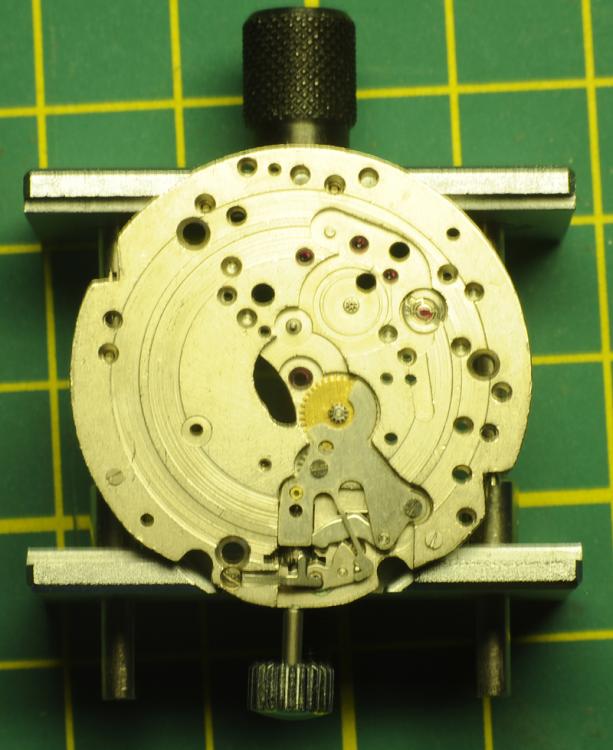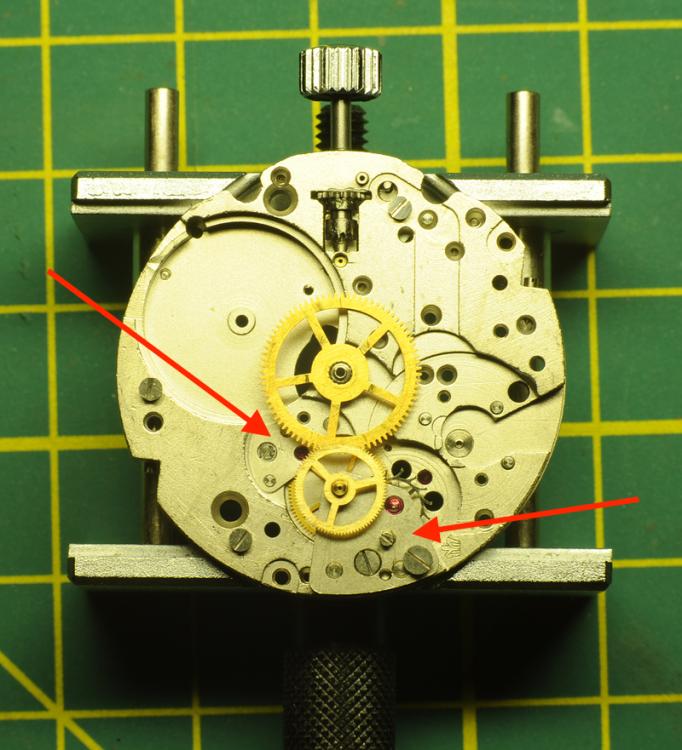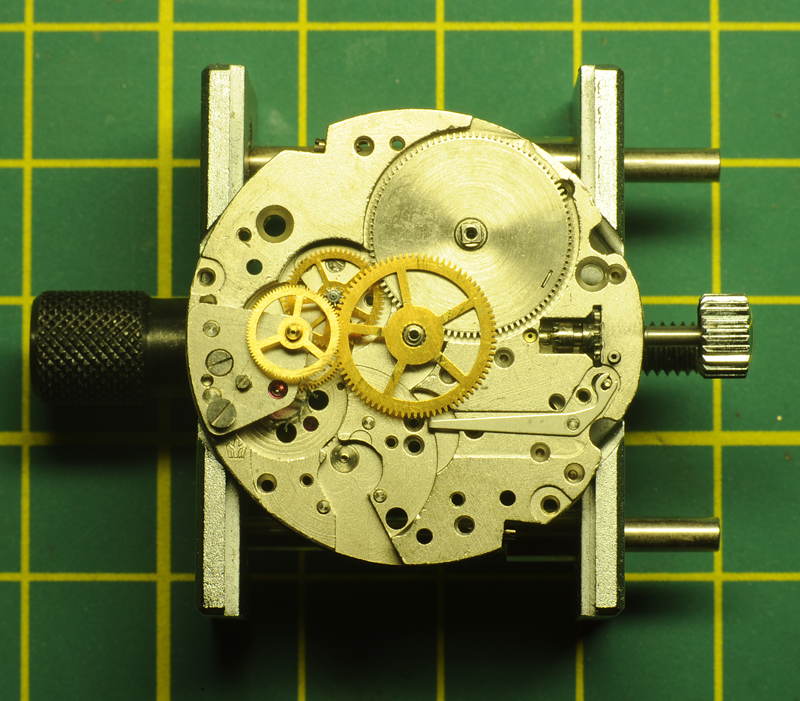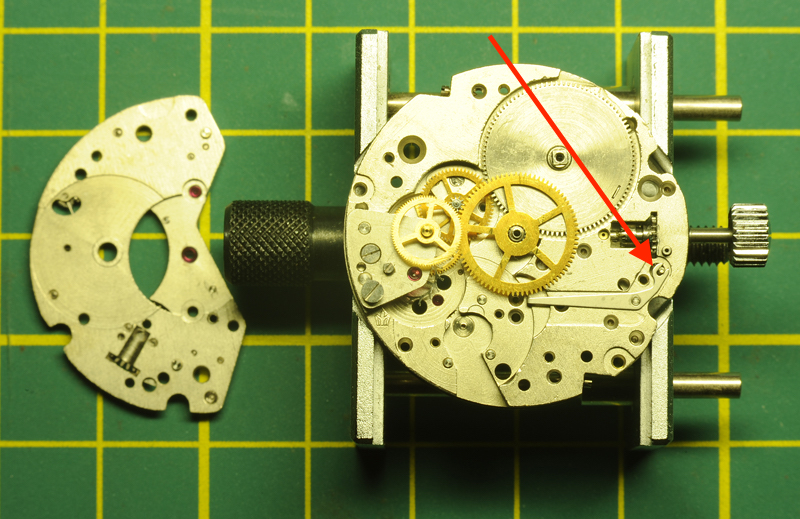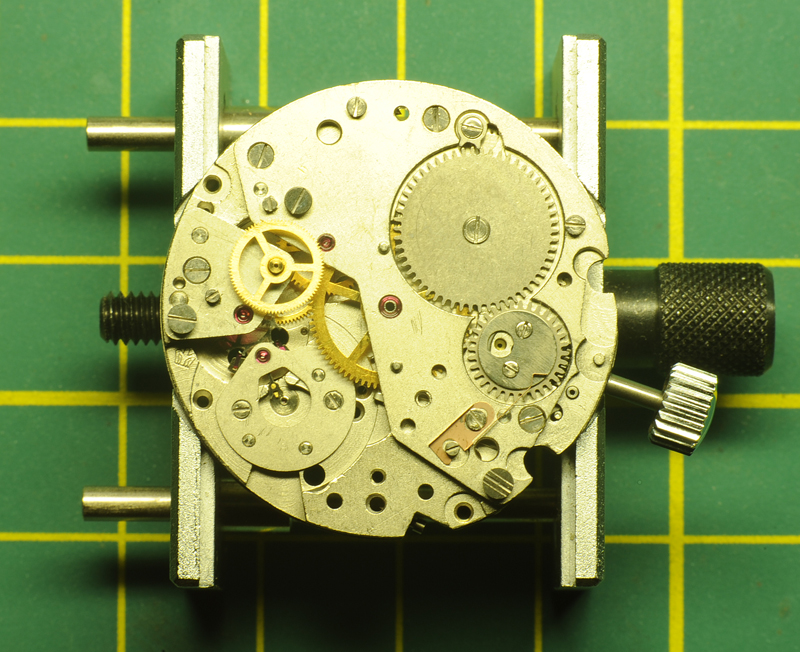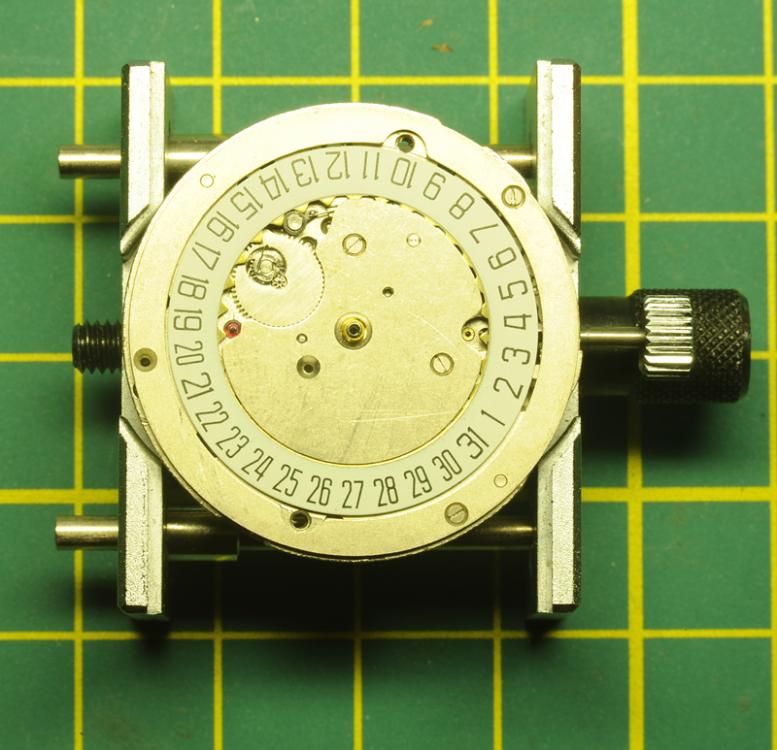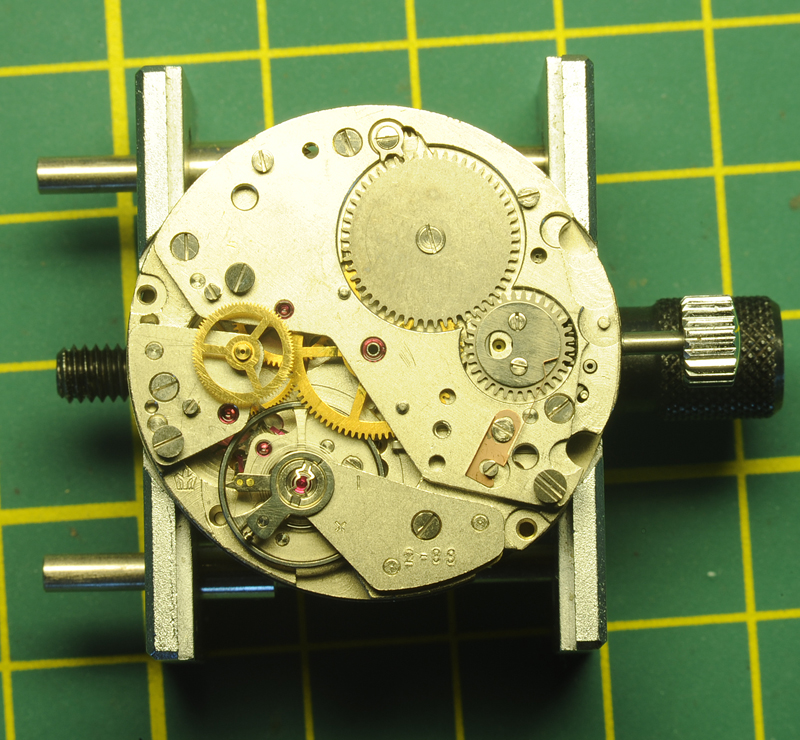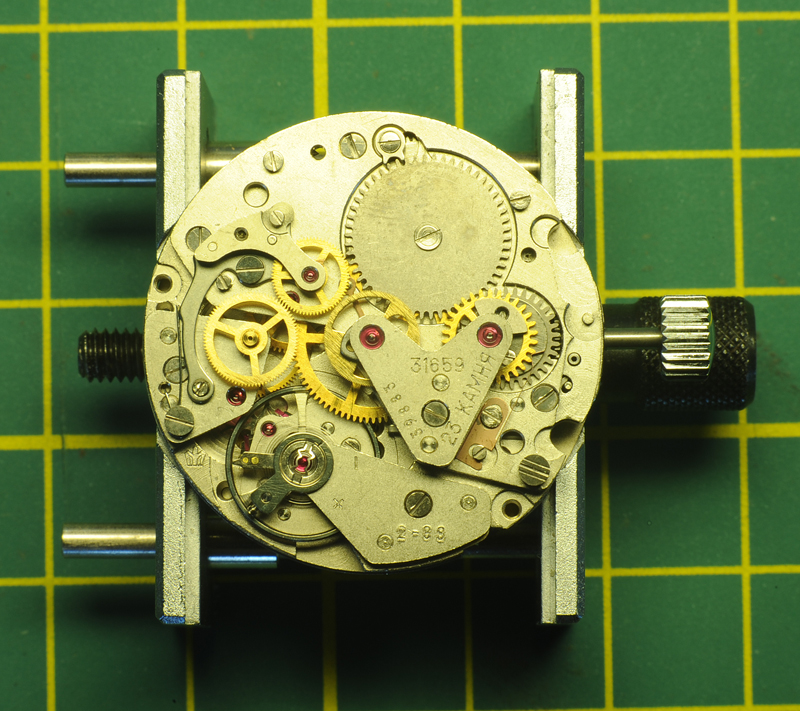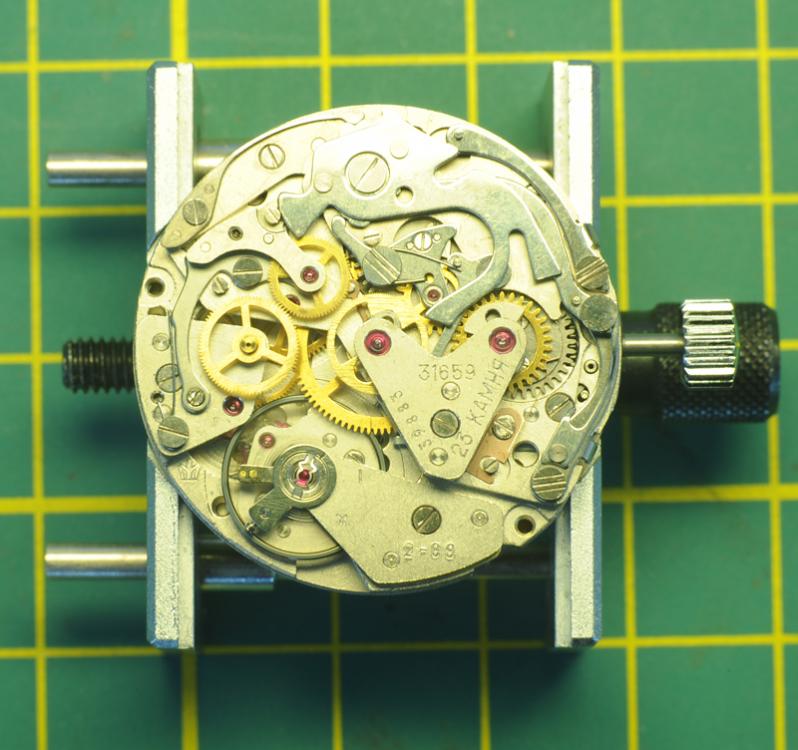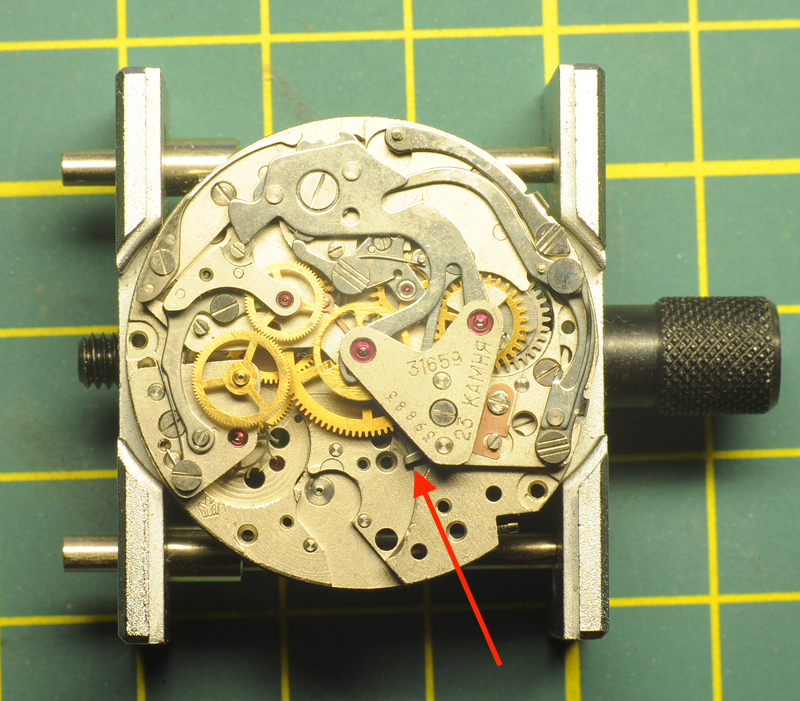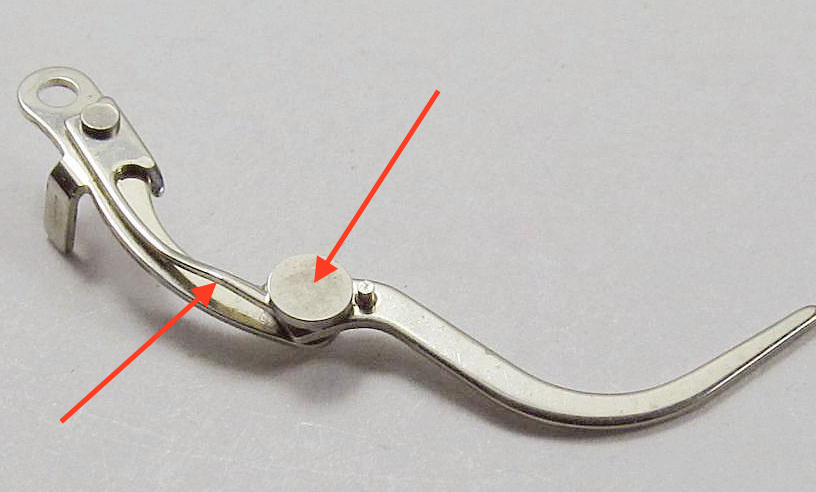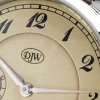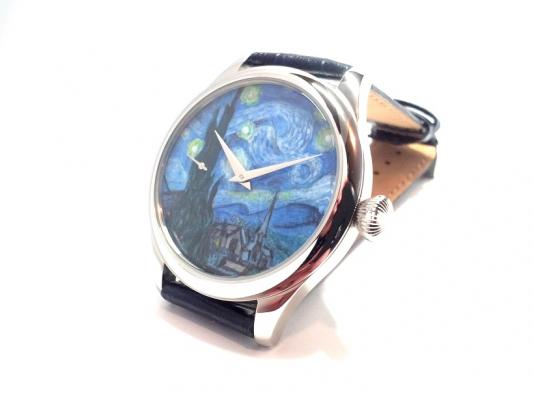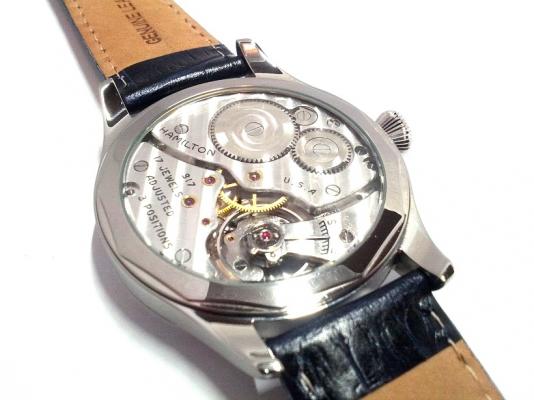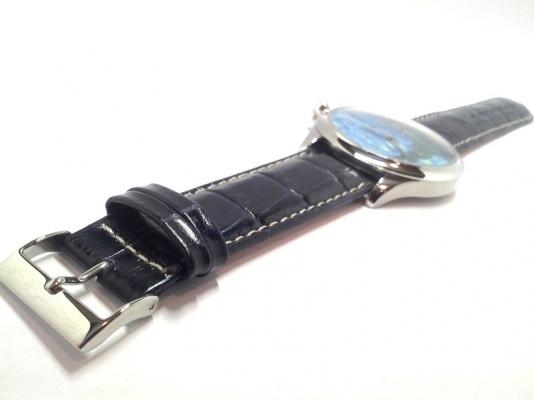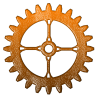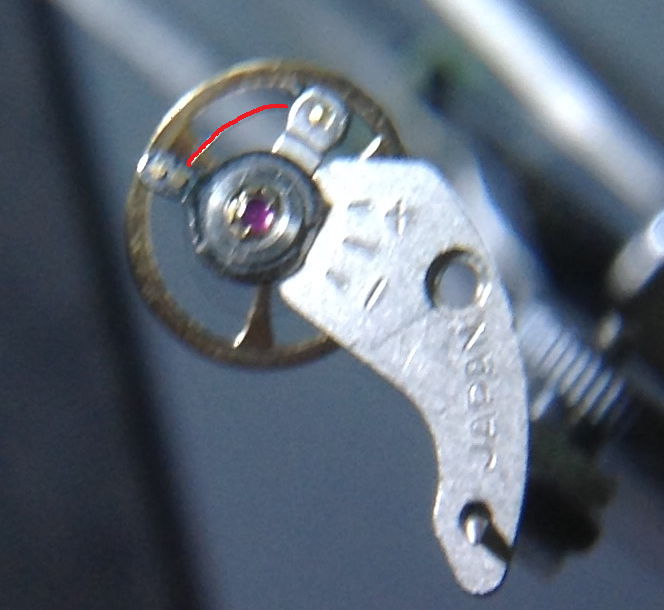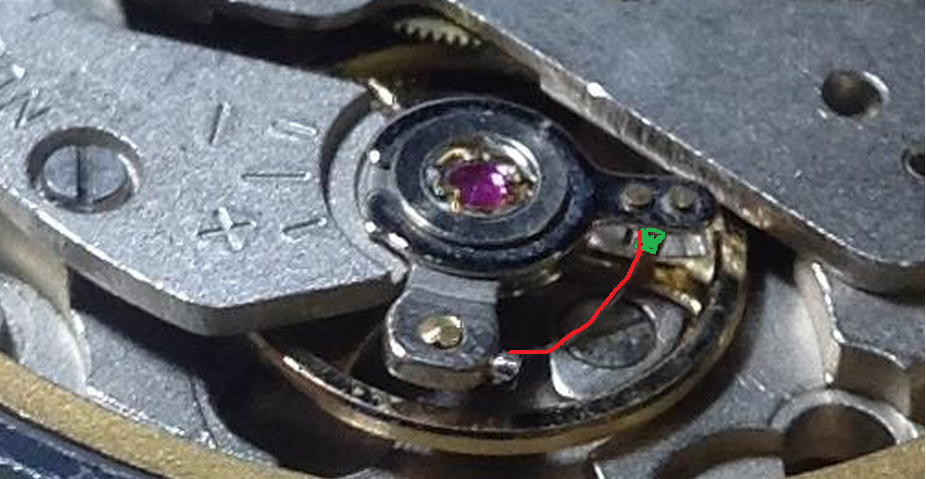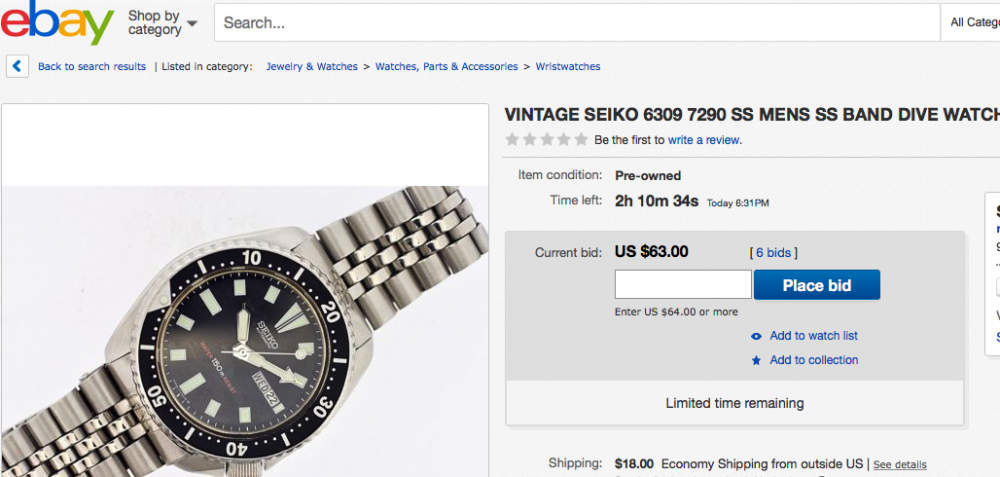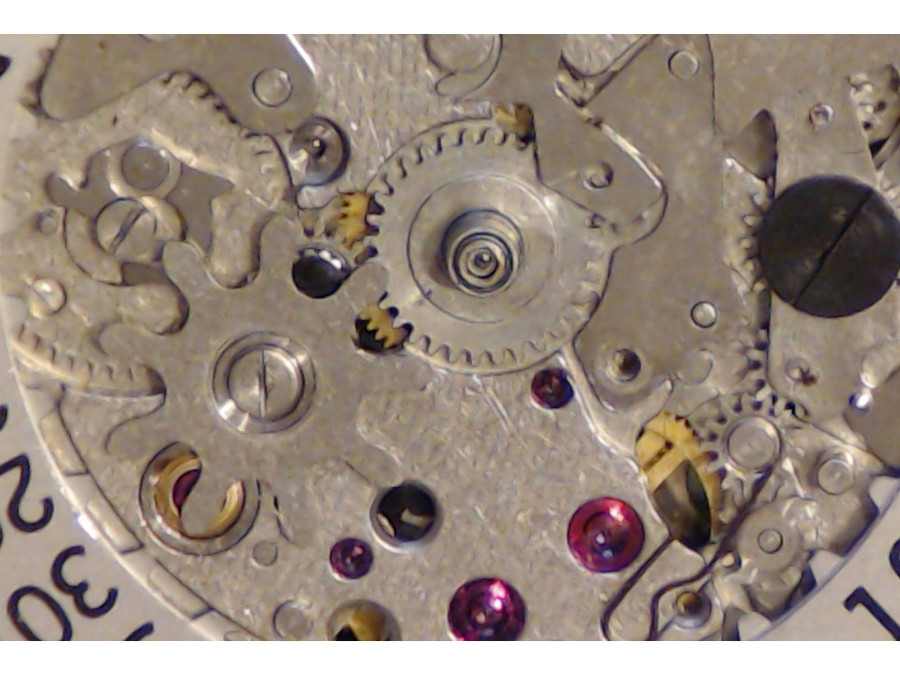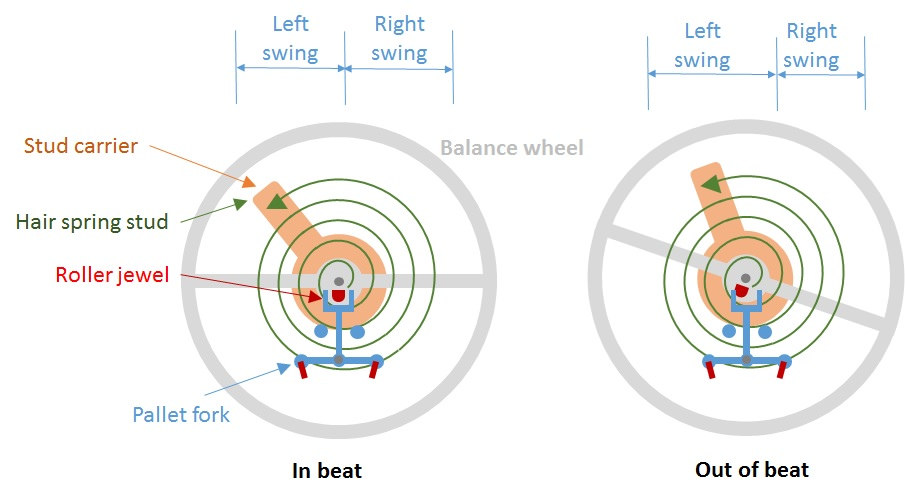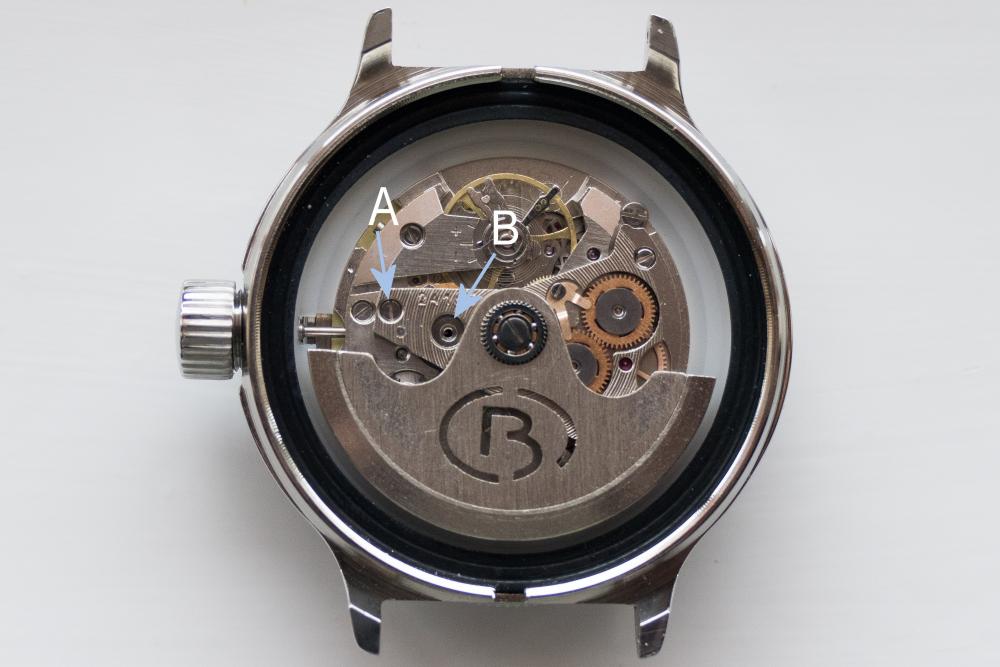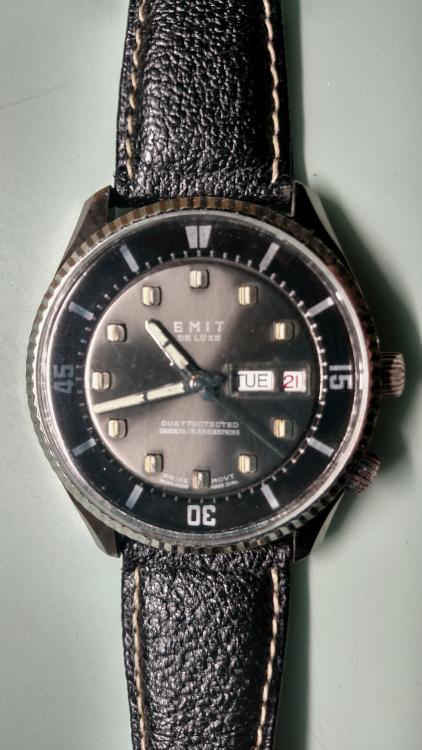Leaderboard
Popular Content
Showing content with the highest reputation on 02/28/17 in all areas
-
Welcome to my custom made watchmaker and repair video camera. Paul Stuart’s Professional Watchmaker Video Camera Project Historical methods of magnification There are many well established historical methods still used today by watchmakers to magnify watch movements while working on them. Without suitable magnification, it is almost an impossible task. To this day, these historical methods still serve the industry well. Stereo and USB microscopes Modern technology has come to the aid of the watch manufacturing and repair industry. Many watchmakers/repairers use stereo and USB microscopes to assist in their work. These have proven to be of benefit for work on extremely small parts such as pivots, hairsprings and so on. Some of these types of microscopes can be connected to monitors so that one can see, magnified and in real time, exactly what is being worked on. However, sometimes the working distance between the watch and the end of the microscope can make life difficult. Microscopes with a reasonable working distance of say, 30cm to 50cm, or even more can be very expensive. Not that one would require more of course. My watchmaker/repairer video camera project As an amateur watch repairer, I have often wished for a better method to magnify and view watch movements in real time on my computer so that I can, without straining my eyes so much, take movements apart and reassemble them. I’ve already mentioned working distance, I think 30cm to 50cm would be a good with its obvious benefits. Also, being able to capture reference photos and HD video is important. To have that capability to stream live video, and upload to YouTube etc. would be an additional benefit. Well, I had an idea for a lightweight camera that should be able to achieve the above. I think my idea may appeal to others. The project cost was reasonable. More on that later. Could I adapt a webcam to suit my requirements? No doubt the idea of using a webcam has been tried before. However, the zoom capability of most webcams is rather limited and they have wide angle lenses. Nearly all have a fixed lens. But a plus point is the webcam management software some manufacturers provide. To be fair, I have never tried using a decent DSLR or camcorder to achieve the above, but I believe I’m correct in thinking firewire connectivity is a problem between modern cameras and computers to monitor in real time. I think it is something to do with the fact they have SD cards. For me though, they seem a bit bulky and expensive for this purpose. I like tinkering with things, my idea was, what if I removed the fixed lens from a webcam and replaced it with one that could be manually adjusted for zoom and focus, together with an acceptable working distance capability and narrower the field of vision. The following is how I went about testing this idea out. How I modified a webcam After researching several different webcams specifications, I decided t adapt a Logitech c920. The c920 has proven to be one of the best webcams and was recently succeeded by the c922. But it is the c920 I used for this modification. The c920 can do real full HD streaming of 1920×1080p @ 30fps with image size up to 2304x1563p. This is how I went about it: I took a Logitech c920 apart to expose the circuit board, its fixed lens and USB wiring assembly. I removed 2 screws securing the lens assembly, then unsoldered the lens and USB screening wire. The lens, complete with its IR low pass filter, came away from the PCB quite easily to expose the CMOS sensor and its infrared (IR) part of the spectrum. For my purpose the IR part of the spectrum is not needed, so I had to add an IR low pass filter. More about that later. I solder connected 30 gauge (0.5mm) single strand wire between the main circuit board and USB board as follows: TP3 to USB board D+ TP2 to USB board D- TP1 to USB board Vcc Removed green solder mask adjacent to TP25 on the main PCB for the GND connection and GND on the USB board. Used the existing shielding solder tab on the main PCB for a shielding connection to the USB socket housing. Unsoldered the four LED’s from the main PCB at D3, D5, D6 and D8. I could have left the diodes in place and simply put some black tape over them. Both the modified circuit board and new USB socket were then mounted into a custom-made aluminum housing having a CS lens thread. Because the original filter was removed with the lens assembly, it had to be replaced with an IR Low Pass filter and mounted with double sided tape in the new custom housing. I then attached a 5-50mm CS varifocal lens with manual iris and focus. This was a f1.4, 3 mega pixels, 1/2.7” lens and suitable for the original Logitech 1/3” format CMOS sensor. Custom watchmaker camera case, rear view. With Logitech c920 lens removed, custom wiring done and circuit board assembled. Front view without the new lens attached, new IR low pass filter is assembled. Parts required 1 x Logitech c920, these can be obtained at a very reasonable price from auction websites. 1 x Custom made box for the reworked c920 circuit board, and with CS type lens mount. 1 x IR low pass filter (to replace the one removed with the c920 fixed lens). 1 x CS lens – f1.4, 5-50mm, 3 megapixel, manual focus and manual zoom. 1 x 5mm CS lens extension ring. Result I now have a camera to zoom in close and a respectable working distance between 30cm to 50cm or more. It can stream live, record videos and take snapshots. I can see all this on my computer, live as I’m working on watch movements. Example full screen captures at a working distance of 30cm At 50cm Paul Stuart’s Professional Watchmaker Video Camera Project – Parts and Specifications Parts price list Logitech C920 webcam £27.00. I got mine off an auction website cheap because the USB wire was broken. This was not needed anyway because of the new connection I was going to make to a new USB output port in the new case. Custom c920 anodised aluminium (aluminium) case. £56.00 0.5mm copper core silver plated bodge wire. £2.00. From auction website Lens 1/2.7" 5-50mm Manual Iris 3 Megapixel Lens. Features: 1. 3 Mega Pixel, manual focus iris and zoom lens 2. 2.1/2.7" High quality 5-50mm varifocal CCTV IR CS lens 3. Low distortion 4. High resolution £89.00 5mm C to CS lens extension ring. £3.00. From auction website. Total spend: £177.004 points
-
I thought I'd break this out as a separate narrative from the Pierce Navigator repair I posted here. Anyone who has done an old chronograph repair is aware of how delicate part 8270 (minute recording jumper) is. The Pierce 134 movement is put together quite a bit differently from your normal chronograph in that it has a vertical clutch arrangement as opposed to the laterally engaged coupling clutch found in the more common Venus and Valjoux chronograph movements. As a result of this uniqueness many parts, while functionally the same, are designed in a wholly different way. The Pierce minute recording jumper (pawl) is different from the typical jumper piece in that it is not a spring, but rather a pivoting lever which is held in tension by the thinest of wires. The wire needs to be manipulated in to put the jumper under just enough tension to hold the minute register wheel static until activated by the intermediate wheel. Too much tension will cause the watch to stop when the elapsed minutes are recorded, and too little tension will allow the minute register wheel to spin freely. Unfortunately it is not uncommon for the wire providing tension to fail after manipulation. Here I have a jumper in which the wire has broken and the jewel (well, actually it's just a cut piece of steel) has come lose. Initially I though it would be a simple fix to replace the broken wire. I used some 18 gauge electrical wire which was composed of several strands of thinner copper wire. Stripping the insulation off, I took a single strand of the copper wire and assumed it would suffice. Under the microscope it was evident that this approach wouldn't work. Even the smallest copper wire I could find was several times thicker than the wire I needed. Using the bench micrometer I measured the thickness of the broken wire at 0.05mm. To give an idea of how thin this is, I snapped a picture under the microscope of the wire next to a human hair. The wire is on top, the hair on the bottom. Armed with hard data I was ready to take a second shot at the challenge. Using the internets I found a company in the UK which could supply nickel wire in the same thickness. I placed an order, then added a couple spools of varying thickness just in case (and to make the product to shipping cost ratio a bit more reasonable). The wire arrived in due course and was exactly as described. I began my repair by knocking out the brass pin which secured the old broken wire to the pawl. A sewing needled was used to knock the pin out. The "jewel" was then replaced using a bit of shellac and a alcohol lamp. Now it was time to replace the spring wire. I cut a length from the spool and threaded it through the eye piece on the jumper. Naturally this was done under a microscope. A replacement pin was inserted to hold the wire in place and the excess was trimmed off using the scissors on my Swiss army knife (they seemed to be the perfect tool for this job). As you can see had two jumpers to repair: I'm very pleased to have been able to repair these parts as they can be quite expensive when purchased second hand; from personal experience I've seen the Valjoux and Venus jumpers cost between $30 and $120 USD which is quite a lot for a little bit of steel. Pierce parts can be hard to come by also. I currently have two Pierces in varying stages of repair so the jumpers will come in handy. On a side note I don't vape so I have no idea why tiny nickel wire is necessary for smokeless smoking.2 points
-
Agree with everyone except working on chronograph. Leave well alone for time being. Seiko will be your best choice. Mark did video's in 4 parts not 3 ( 4th being an extra on conclusion) On the Seiko 7s26. They are excellent videos and watch these several times. Once you've mastered the 7s26. Move on to different makes and you'll find the principles are the same. Going to smaller movements such as ladies watches is really going to depend on how steady your hands are. It's all great fun so don't rush, plenty of time and lots of patience. Sent from my SM-T585 using Tapatalk2 points
-
Second what noirac says, seikos are particulerly good because i believe they're slightly on the watchmaker friendly side with the simple nature of their design and construction, and you can regularly find whole lots of scrap seiko movements for a few pounds on ebay. if you do feel a little daunted just learn how to dis and re assemble the automatic bridge, then just the calender work, sort of like dry runs, then you can quickly work up to doing the whole watch in one go.2 points
-
After you have mastered what you intend to do with the P/W. You should try a Gents watch, not to complected, get used to handling the small parts, take everything to bits and I mean everything. Next up one with calendar work, auto and ladies small movements then ladies calendar work, auto. If you were on BHI course you wouldn't be working on chronographs until your final years, that would be after you master how to make and fit a balance staff.2 points
-
How about something with a date complication or an automatic bridge. Small steps, but useful. Or if you want a bigger leap, chronographs.2 points
-
I bought from an ex. Poljot salesman, this undisturbed Shturmanskie "classic" with a Poljot 31659 movement. The Poljot 31659 movement is almost identical to the Poljot 3133 movement, but it has an additional balance-hack. The watch has never been used, never been worn, just sitting in a drawer waiting to see, after all those years, daylight again. Before it gets wrist-time, a service was overdue. The "pop-off" the back-lid was anything but "pop-off". The provided slot was of not much use and I ended up driving carefully a scalpel-knife in between the lid and the housing seam; slowly creating a gap big enough to insert a blunt knife. Even then, it took a huge force to get the lid to "pop-off". Needless to say, the nice, nearly virgin lid has now its first unavoidable marks. The light surface scratches on the lid are very minor, but appear more severe on the picture due to the light reflection. The Plexiglass crystal is scratch free, but has some minor aging-cracks. The inside reveals an undisturbed 31659 movement, with 2-88 stamped in the chronograph bridge. February 1988, that's to date exactly 29 years. I took the movement out, removed the hands and dial. This time the small seconds- and minute recording-hands came off unharmed. However I wasn't that lucky with the big chronograph seconds recording hand. It was so tight, that even with great care, in the end the hand stripped off its pipe-bushing With the hands and dial out of the way, I managed to get the pipe bushing of the pinion without any further damage. As you can see on the picture, The outer ring has one screw missing, so has the calendar center plate ....... I guess the factory worker in 1988 didn't feel like it that day!? Can we still find out ? Stripped the calendar works; Stripped the keyless works, flipped movement over and removed balance assembly and pallet fork. One can just see the hack appearing from underneath the barrel bridge; see arrow; Time to disassemble the chronograph components. Even though for a 31659 one has to deviate from the guide slightly during assembly, I can highly recommend this service guide made by WUS member SLLS on June 2015. Click on the link below to download. Thank you very much SLLS for you excellent and clear servicing guide Service Guide Poljot movement 3133.pdf Remember to re-insert all the screws in their respective holes after removing the component. A bit more work, but it makes life during re-assembling so much easier !! See service guide for part-numbers, additional pictures and guidance. First the Hammer (8220) followed by the hammer-cam-jumper (8356). Before removing the operating lever (8140), I lifted the spring on top of the rivet. This prevents the lever from popping out after the LH-screw is undone, but also makes the installment much easier. Obviously, the spring has to be put back after re-installation. Removal of the operating and fly-back lever-spring (8335), fly-back lever (8180), blocking lever (8200), Blocking lever spring (8335) and sliding gear (8100). Left is the chronograph plate (8281) with all screws inserted in their respective holes. Next the chronograph plate (8281), the Chronograph bridge (8500), the seconds recording wheel (8000), the friction-spring (8290) and the minute recording wheel (8020). According to the guide, the very delicate minute recording jumper (8270) is removed, but I left it in place. If you also leave it, be very aware during subsequent handling of the barrel-bridge !! Next is the coupling clutch spring (8320) and the coupling clutch (8080). This has stripped most of the chronograph components, apart from the chronograph drive wheel (or wheel over 4th wheel if you like); Next is the ratchet wheel (415) and the barrel-bridge (105). Now the hack-lever can be seen. The little spring at the end is very delicate ..... Next is the 3th wheel (210) which has to be carefully manipulated from underneath the center-wheel. This reveals a plate (no number) for the 3th wheel which has to be removed. Instead of pulling the chronograph drive wheel (wheel over 4th wheel), to reduce risk I removed the whole assembly; the train wheel bridge (110), 4th wheel (225) and driving wheel (8060). Be aware of the long pivot on the 4th wheel ! As soon as the train wheel bridge is undone, the escape wheel (705) comes free. Spring barrel, cannon-pinion and center wheel as last. Left is the bare main-plate. The main-spring seemed in a good shape; Time to clean all the parts and lubricate the balance cap-stone in the main-plate. I use Rodeco as a support. Once to small droplet of oil is on the cap-stone, I turn the Rodeco top-down and insert the cap-stone in the chaton. Works very well for me As far as I can see, next to an additional recess in the main-plate, the only difference between the 31659 and the 3133 are these two components. The setting lever has an additional post and the additional hacking-lever. To the left of the hacking-lever the tiny spring which pushes against the balance wheel when engaged. Next up the servicing of the barrel-bridge with click (425) & click-spring (430) and crown-wheel (420). The little screws holding the crown wheel core (423) are known for shearing off, so be careful if you decide to proceed with this step ... Now I had to deviate from the guide. Due to the fact that the hacking lever engages onto the additional setting lever post, I installed the keyless works first; Flipped the main-plate over and installed the center wheel, the complete 4th wheel assembly with escape wheel and 3rd wheel plate (left arrow). Before installing the 3rd wheel, it is now to lubricate the jewel of the 3rd wheel; Install 3rd wheel, barrel and hacking-lever; Make sure the hacking lever is engaged onto the additional setting lever post; Install barrel bridge, make sure 3rd wheel finds its jewel and ensure all the gears are running smoothly before tightening the screws. Lubricated pivot jewels and pallet stones. Install pallet fork & bridge, check correct working and install ratchet wheel. Thereafter I did the calendar works and check functionality. Now a little lesson I've learned: I left the keyless works in the time-setting mode. Later I couldn't get the balance wheel to seat properly ?? So, if you later, during assembling of the balance assembly, wonder why you can't get the balance wheel to seat, better is the retract the hacking lever by setting the keyless works in the winding position. That does help ! After some scratching my head (see above), the balance wheel was back in and the movement came alive Lubricated the balance-bridge cap-stone. No parts reference number mentioned for re-assembling; Replaced the coupling clutch, the coupling clutch spring, minute recording wheel, friction spring, seconds recording wheel and chronograph bridge; Re-installed the chronograph plate, sliding gear, blocking lever spring, blocking lever, fly-back lever, fly-back lever spring, operating lever (remember to put the spring on top of the lever back under the rivet after replacement !), hammer and hammer cam jumper ....... Tested and all chronograph functions are working fine. The initial amplitude is a bit low, around 270 degrees dial down (?), but I'll let it run for a while to see if that improves ..... I managed to get the chronograph seconds-recording-hand back on its pipe-bushing, but time will tell if that holds. Also closing the watch case will require a hand-press ...... not a simple "pop-on" ........ this phenomena has been reported by more people .... Hope that this Poljot 31659 movement walk-through is of any use? ....... else it will be a nice reference for myself That was enough adrenaline again Regards: Roland.1 point
-
Like a proud father, I feel the urge to show off my latest creation. We recently moved to a new house which finally gave me the space to have an office/workshop. I have been working on a tiny little homemade bench the past few years and have been dreaming of a proper bench. Sadly the ready made ones I wanted are way out of my league. My design goals were: Affordable versatile Free standing (i rent the house and cant drill bolts into the walls) Sturdy I got the original inspiration from Dan Spitz. http://danspitz.com/for-sale/ His concept is to make stunning workbench tops. You then supply the legs. However at £2,000 for the top, there was that budget thing again. I did however steal his idea (I don't actually know if he or someone else came up with it) of the routed groove along the edge. It has already proved to be a godsend in terms of catching small screws, and the odd tool. I decided to add a perspex screen on the back and down one side as I am notoriously rubbish at not flicking click springs etc across the room. So, the basics. Worktop: 40mm solid Beech kitchen work surface from Ebay 2000mm x 620mm - £85 Legs: Steel workbench legs from Machine Mart about £40 including shipping Bench support: 2 L shaped steel struts from an old Victorian bed. £5.00 from a salvage yard, cleaned up with an angle grinder then polished. Struts: 30mm square steel tubing from steel merchant £20.00 Danish oil for bare wood: £5.00 (four coats on either side) £20 for bolts and screws. So I made the whole thing for well under £200. The top is extremely heavy and I haven't totally managed to eradicate minimal side movement and ideally I would bolt it to the wall but as I said I can't. Still it isn't going anywhere and I love it. Of course you don't have to make it 2m long but I wanted somewhere for my lathe. I am building a perspex divider to protect the workbench from cuttings from the lathe. Anyway, I hope it might give some of you some ideas.1 point
-
I finished painting the dial quite some time ago, but was searching for the right combination of components to put it all together! I hope you guys like it, if not, at least, find it interesting! Yes, another Hamilton pocket watch movement converted into a wristwatch. Also, These cases are quite nice and are very well made. The strap is a dark blue crocodile grain leather.1 point
-
It's not really a game and I'm more of a clock person. This is one way I can get my knowledge across on this forum about antique clocks.1 point
-
right you are, i never thought of it as a game. with ebay as a sorce of overpriced and broken material, you can learn the art of watch repair.1 point
-
Thanks for that Rodabod. Can I just say how everyone is so very helpful here, and tolerant of my newbie questions. I'm very grateful for the time you all take to assist me. It is greatly appreciated. Kind regards. Deggsy Sent from my iPhone using Tapatalk1 point
-
1 point
-
First off I doubt that you have lost anything as the crown wheel screw only retains two items; the crown wheel and the little washer, so if you have both of those then all is present and correct. You do however have the crown wheel upside down. The crown wheel is mounted to a sliding plate which allows it to move into and out of engagement with the ratchet wheel. The barrel bridge has a sort of oval shaped raised pillar through which the crown wheel sliding plate protrudes. The crown wheel goes recess down so that the oval pillar is within the recess which thus limits the sideways sliding of the crown wheel. If you mount the crown wheel the other way up then you reduce the vertical engagement of the crown and ratchet wheel teeth which could well result in slipping when you wind the watch manually. Flip the crown wheel over and you should be good to go. The reference in the instructions to screwing the crown all the way in following setting the hands and before winding is simply to ensure that the keyless works have moved out of the setting position which doesn't otherwise happen without screwing the crown all the way in due to the lateral throw of the crown/stem decoupling set up. With the watch out of the case you can simply push the stem all the way in. Apologies for the wordy response but I don't seem to have a pic of the barrel bridge that doesn't already have the crown wheel installed.1 point
-
That end curve seems total wrong to me. It should be concentric around the balance staff. Is it like this if put back in the movement? It seems to me that the HS end curve is pushing hardly on the outer regulating pin (green): If so, then the HS cant be flat and centered and sticking to something. This can lead to low amplitude and noises that the timegrapher recognizes false and showing totally wrong rate even if the BPH is selected correctly. Great beat error does not lead to such high difference in rate.1 point
-
You are all correct in what you say. This is what is known as a marriage, the two main parts a case and movement put together to look as one, but with this one there’s more. When I said you need to know about longcase clocks, I was hoping someone would mention the false plate, that is the plate between the dial and the movement. Brass dials never had false plates only painted dials or what we call white dial clocks, if you look you can see top right it doesn’t even fit, there is no pillar to pin into it. The movement and false plate are as one and the seat board, but it’s been altered, the dial would have been a painted dial 12 inch, it is a late movement, you can tell it is late by the style of the pillars in the movement. The dial is from another clock, the spandrels on this dial have no significance at all, with antique brass dials, you can date the dial by the type of spandrel, this dial is I expect from the original movement as it fits well in the hood, so the dial and case fit each other. The hands are of a style from the 1750 to 1800 but these are more modern. I’ve just looked at ebay and the sale has ended with no buyers. If this had been a genuine antique Grandmother clock the price would have been in its thousands because they are as rear as rocking horse s**t. Thanks to all that took part.1 point
-
I agree with all the above advice . Especially the consensus of holding off on the chronographs for a bit as there is a lot of tweaking involved . I would suggest a working Seiko 6309 - 7290 diver . They are a nice watch you will enjoy owning , they have not too complicated auto wind and day / date features , and if needed , parts are readily available , and they don't have the plastic gears that some other Seiko Divers have .. Best of all , you can get a working , or , non working model for a good price . For instance.....1 point
-
1 point
-
It's a very flat even light being offered which picks up the details admirably. Go into settings and change the colour balance setting from "Auto" to tungsten or similar. Play with the available options to get rid of the bluish hue caused by the LED lighting.1 point
-
Needs a diffuser to hide the spotlight effect. Sent from my Honor 5c1 point
-
Should be able to identify two pins which carry the audio signal by using a multimeter. I think piezo transducers usually measure in the K.Ohm range. This assumes it is passive and does not contain a preamp.1 point
-
I'm still running some tests on my home made camera setup and am pleased to show a couple more photos. The first shows the camera rig mounted to my home made, height adjustable worktop. The camera is set up with a 40cm working distance. The second image is of movement at that distance. Please note that both were taken in low light conditions. Movement at 40cm distance in low light conditions. 20170227135314.mts1 point
-
1 point
-
I think that we are both right. Arrow A points to the auto bridge screw, arrow B points to a hole that goes through the auto bridge to provide clearance for and access to the crown wheel screw, which is definitely not there. The good news is that it doesn't look as if the screw has been sheared off which is not uncommon as it is a left hand thread so unless you know, there is a risk of ringing it off by trying to undo it the wrong way. My guess is that once you have the auto bridge out of the way you'll find the little sucker jamming the train wheels.1 point
-
Thank you soo much noirrac1j. I finished it. Had some trouble with the spring shooting across the room. Found it about half an hour later with a giant magnet. Used peg wood to make sure it didn't fly off the next go around. You rock! could not have done it with out the detailed photos. Here it is complete.1 point
-
Would you not just be as well opening a thread "Home Built Watches" where those that are interested in doing this kind of thing can post pictures and information regarding what they have "done", "are doing" and the "progress of". As Bob says, the thread could be open for ever as it's not a time constrained competition.1 point



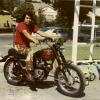

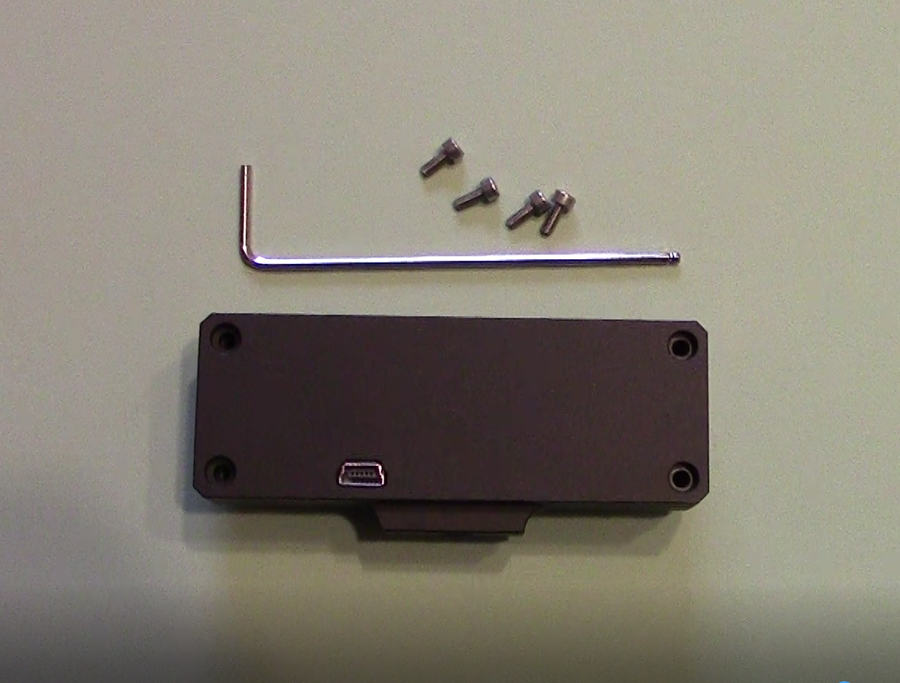
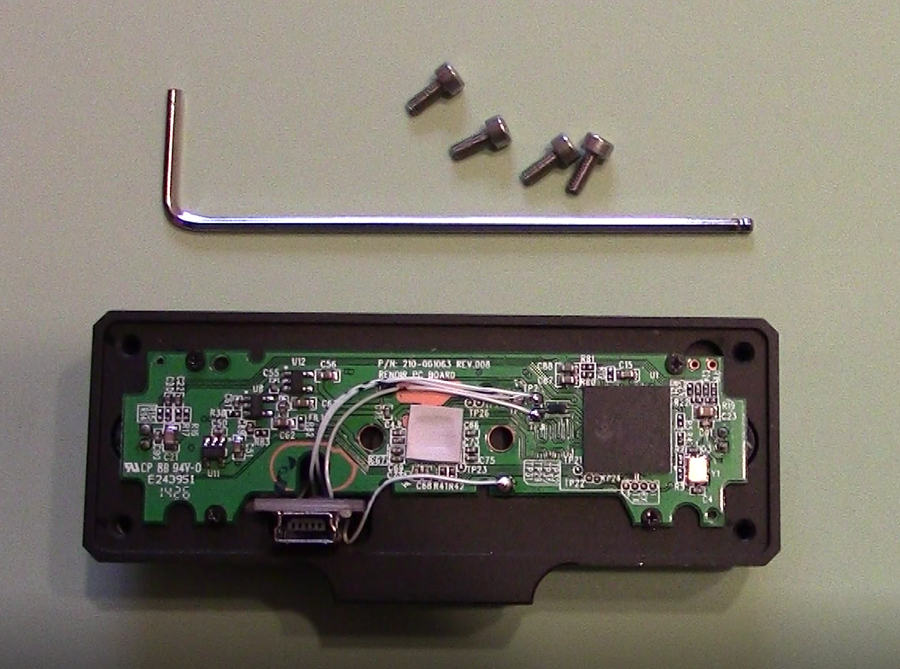
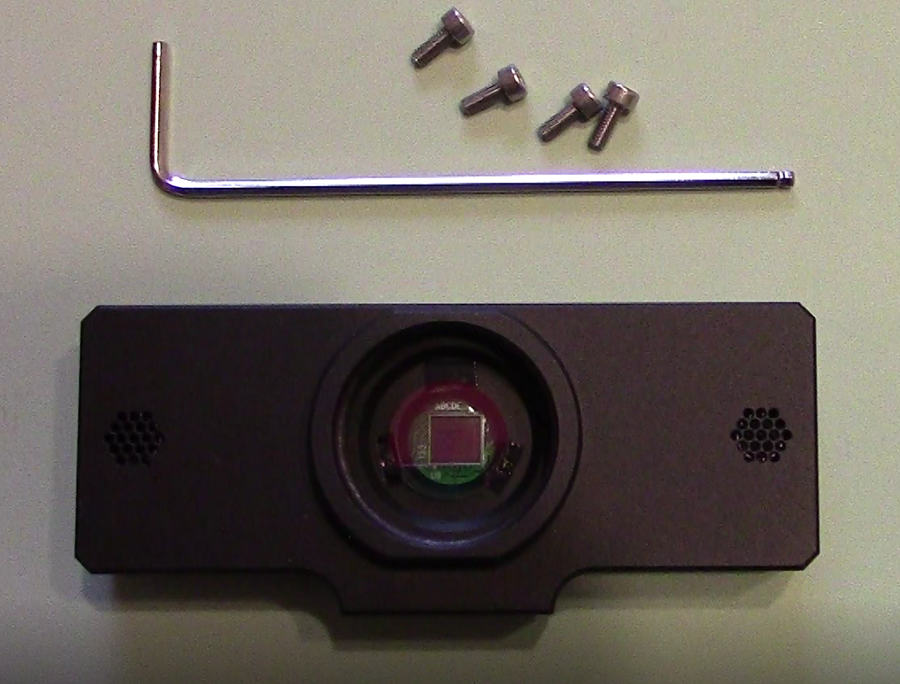
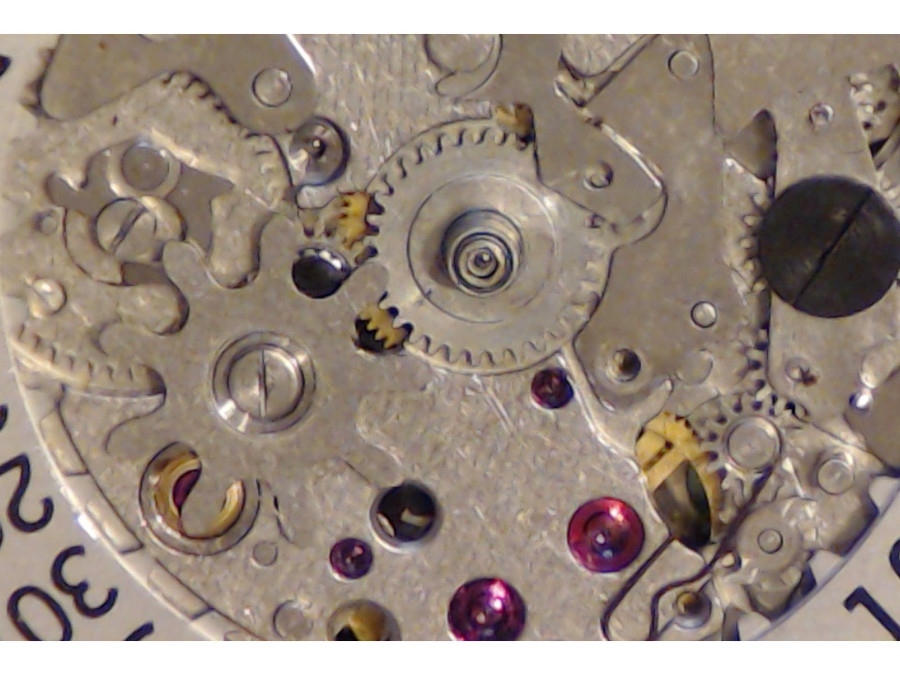
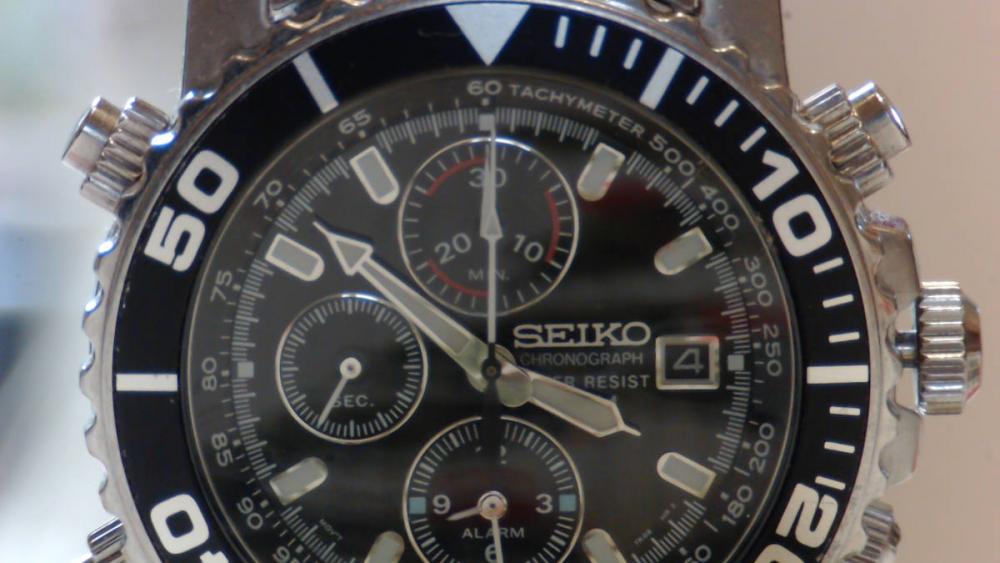
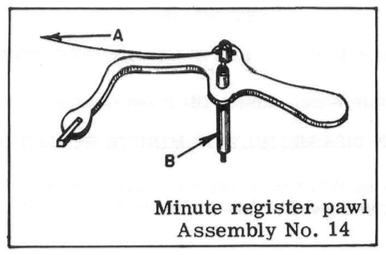
.thumb.jpg.659e45086cdb83afb64c371dfb284dba.jpg)

